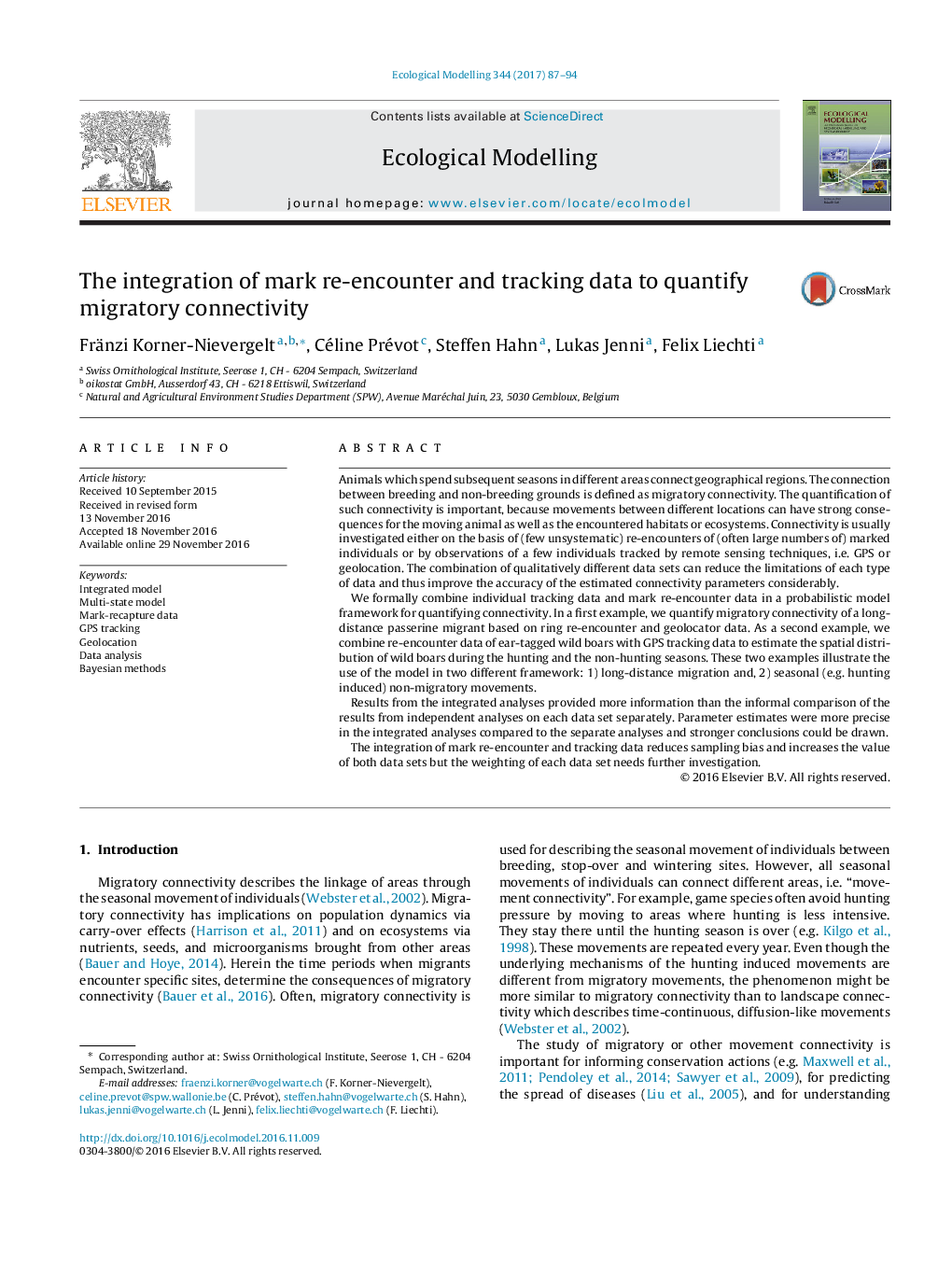| کد مقاله | کد نشریه | سال انتشار | مقاله انگلیسی | نسخه تمام متن |
|---|---|---|---|---|
| 5742282 | 1617403 | 2017 | 8 صفحه PDF | دانلود رایگان |
- Two qualitatively different types of data, mark re-encounter and tracking data, were formally combined to quantify migratory connectivity.
- Based on two examples, we show that more information can be extracted from the data using an integrated model compared to two separate analyses.
- We discuss that the results are less biased when they are based on more than one data type.
- We present a method to measure the relative contribution of each data set to the overall results.
Animals which spend subsequent seasons in different areas connect geographical regions. The connection between breeding and non-breeding grounds is defined as migratory connectivity. The quantification of such connectivity is important, because movements between different locations can have strong consequences for the moving animal as well as the encountered habitats or ecosystems. Connectivity is usually investigated either on the basis of (few unsystematic) re-encounters of (often large numbers of) marked individuals or by observations of a few individuals tracked by remote sensing techniques, i.e. GPS or geolocation. The combination of qualitatively different data sets can reduce the limitations of each type of data and thus improve the accuracy of the estimated connectivity parameters considerably.We formally combine individual tracking data and mark re-encounter data in a probabilistic model framework for quantifying connectivity. In a first example, we quantify migratory connectivity of a long-distance passerine migrant based on ring re-encounter and geolocator data. As a second example, we combine re-encounter data of ear-tagged wild boars with GPS tracking data to estimate the spatial distribution of wild boars during the hunting and the non-hunting seasons. These two examples illustrate the use of the model in two different framework: 1) long-distance migration and, 2) seasonal (e.g. hunting induced) non-migratory movements.Results from the integrated analyses provided more information than the informal comparison of the results from independent analyses on each data set separately. Parameter estimates were more precise in the integrated analyses compared to the separate analyses and stronger conclusions could be drawn.The integration of mark re-encounter and tracking data reduces sampling bias and increases the value of both data sets but the weighting of each data set needs further investigation.
Journal: Ecological Modelling - Volume 344, 24 January 2017, Pages 87-94
